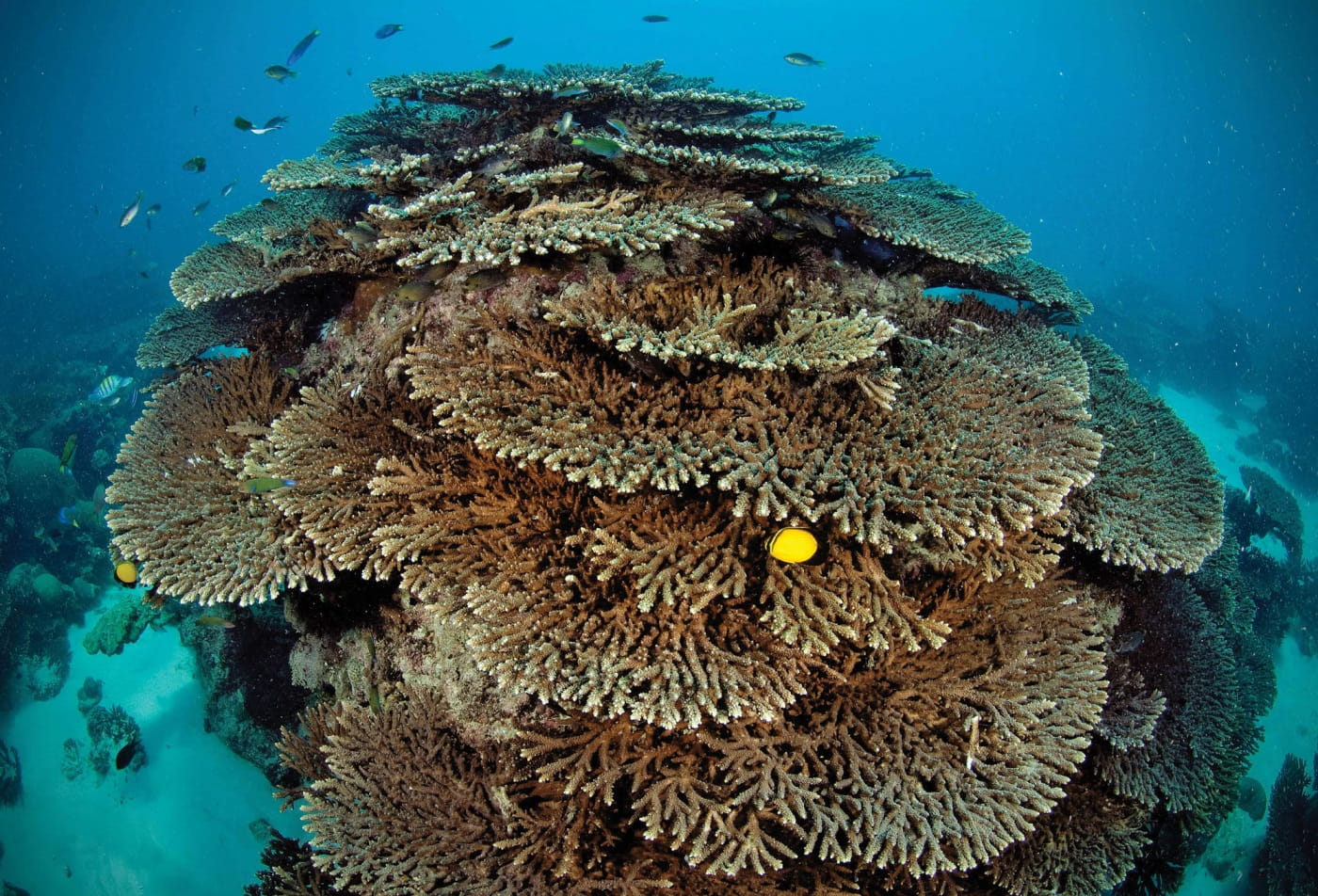
Artificial reefs
Coral reefs are home to invaluable ecological and economic richness, nurturing marine species and providing a natural defense against coastal erosion.
Reefs across the globe have been degraded by natural and human pressures. Those in the Arabian Gulf are no exception, being at risk of disappearance from a combination of climate change factors and human activities such as fishing, dredging, and marine pollution.
Aramco has actively promoted the growth of marine life in the Gulf with planned and unplanned artificial reefs. In addition to the offshore oil and gas facilities that act as artificial reefs by providing substrate for marine communities, we have advanced our approach by creating permanent, stable and long-lived artificial reef structures throughout the region.
In total, 3,247 reef blocks have been deployed at 25 sites in the Arabian Gulf, alongside a reef structure in Jizan, Red Sea. Deployment sites in the Arabian Gulf include the region of Manifa, Abu Ali, Jubail, Ras Tanura, Jana Island, Safaniya, and Khafji.
Seasonal monitoring of the artificial reefs examined productivity, species biodiversity and fish numbers. The results indicated that the central part of the Arabian Gulf — specifically the region of Manifa, Abu Ali, Jubail and Ras Tanura — was the area with the highest abundance of reef fish, the highest biodiversity of reef organisms, and the highest biomass productivity — a clear indicator of the importance of our efforts in the region.


